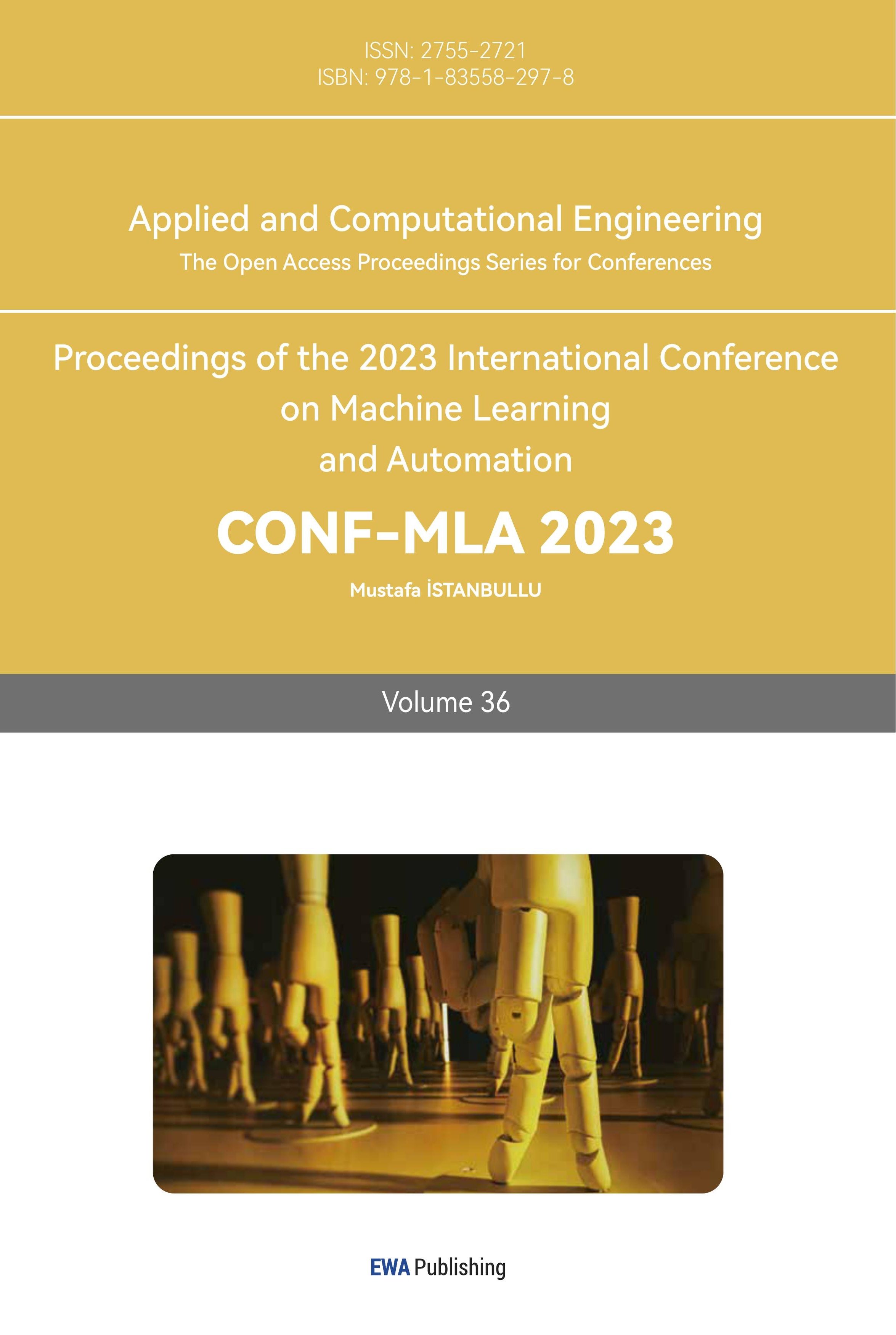References
[1]. Creswell, A., White, T., Dumoulin, V., Arulkumaran, K., Sengupta, B., & Bharath, A. A. (2018). Generative adversarial networks: An overview. IEEE signal processing magazine, 35(1), 53-65..
[2]. Yi-Lun, L., Dai Xing-Yuan, L. L., Xiao, W., & Fei-Yue, W. (2018). The new frontier of AI research: generative adversarial networks. Acta Automatica Sinica, 44(5), 775-792.
[3]. Baidoo-Anu, D., & Owusu Ansah, L. (2023). Education in the era of generative artificial intelligence (AI): Understanding the potential benefits of ChatGPT in promoting teaching and learning. Available at SSRN 4337484.
[4]. Gozalo-Brizuela, R., & Garrido-Merchan, E. C. (2023). ChatGPT is not all you need. A State of the Art Review of large Generative AI models. arXiv preprint arXiv:2301.04655.
[5]. Solaiman, I. (2023, June). The gradient of generative AI release: Methods and considerations. In Proceedings of the 2023 ACM Conference on Fairness, Accountability, and Transparency (pp. 111-122).
[6]. Aydın, Ö., & Karaarslan, E. (2023). Is ChatGPT leading generative AI? What is beyond expectations?. What is beyond expectations.
[7]. Zohny, H., McMillan, J., & King, M. (2023). Ethics of generative AI. Journal of medical ethics, 49(2), 79-80.
[8]. Lim, W. M., Gunasekara, A., Pallant, J. L., Pallant, J. I., & Pechenkina, E. (2023). Generative AI and the future of education: Ragnarök or reformation? A paradoxical perspective from management educators. The International Journal of Management Education, 21(2), 100790.
[9]. Weisz, J. D., Muller, M., He, J., & Houde, S. (2023). Toward general design principles for generative AI applications. arXiv preprint arXiv:2301.05578.
[10]. Pavlik, J. V. (2023). Collaborating with ChatGPT: Considering the implications of generative artificial intelligence for journalism and media education. Journalism & Mass Communication Educator, 78(1), 84-93.
Cite this article
Bai,J. (2024). Exploring techniques and overcoming hurdles in generative AI. Applied and Computational Engineering,36,248-253.
Data availability
The datasets used and/or analyzed during the current study will be available from the authors upon reasonable request.
Disclaimer/Publisher's Note
The statements, opinions and data contained in all publications are solely those of the individual author(s) and contributor(s) and not of EWA Publishing and/or the editor(s). EWA Publishing and/or the editor(s) disclaim responsibility for any injury to people or property resulting from any ideas, methods, instructions or products referred to in the content.
About volume
Volume title: Proceedings of the 2023 International Conference on Machine Learning and Automation
© 2024 by the author(s). Licensee EWA Publishing, Oxford, UK. This article is an open access article distributed under the terms and
conditions of the Creative Commons Attribution (CC BY) license. Authors who
publish this series agree to the following terms:
1. Authors retain copyright and grant the series right of first publication with the work simultaneously licensed under a Creative Commons
Attribution License that allows others to share the work with an acknowledgment of the work's authorship and initial publication in this
series.
2. Authors are able to enter into separate, additional contractual arrangements for the non-exclusive distribution of the series's published
version of the work (e.g., post it to an institutional repository or publish it in a book), with an acknowledgment of its initial
publication in this series.
3. Authors are permitted and encouraged to post their work online (e.g., in institutional repositories or on their website) prior to and
during the submission process, as it can lead to productive exchanges, as well as earlier and greater citation of published work (See
Open access policy for details).
References
[1]. Creswell, A., White, T., Dumoulin, V., Arulkumaran, K., Sengupta, B., & Bharath, A. A. (2018). Generative adversarial networks: An overview. IEEE signal processing magazine, 35(1), 53-65..
[2]. Yi-Lun, L., Dai Xing-Yuan, L. L., Xiao, W., & Fei-Yue, W. (2018). The new frontier of AI research: generative adversarial networks. Acta Automatica Sinica, 44(5), 775-792.
[3]. Baidoo-Anu, D., & Owusu Ansah, L. (2023). Education in the era of generative artificial intelligence (AI): Understanding the potential benefits of ChatGPT in promoting teaching and learning. Available at SSRN 4337484.
[4]. Gozalo-Brizuela, R., & Garrido-Merchan, E. C. (2023). ChatGPT is not all you need. A State of the Art Review of large Generative AI models. arXiv preprint arXiv:2301.04655.
[5]. Solaiman, I. (2023, June). The gradient of generative AI release: Methods and considerations. In Proceedings of the 2023 ACM Conference on Fairness, Accountability, and Transparency (pp. 111-122).
[6]. Aydın, Ö., & Karaarslan, E. (2023). Is ChatGPT leading generative AI? What is beyond expectations?. What is beyond expectations.
[7]. Zohny, H., McMillan, J., & King, M. (2023). Ethics of generative AI. Journal of medical ethics, 49(2), 79-80.
[8]. Lim, W. M., Gunasekara, A., Pallant, J. L., Pallant, J. I., & Pechenkina, E. (2023). Generative AI and the future of education: Ragnarök or reformation? A paradoxical perspective from management educators. The International Journal of Management Education, 21(2), 100790.
[9]. Weisz, J. D., Muller, M., He, J., & Houde, S. (2023). Toward general design principles for generative AI applications. arXiv preprint arXiv:2301.05578.
[10]. Pavlik, J. V. (2023). Collaborating with ChatGPT: Considering the implications of generative artificial intelligence for journalism and media education. Journalism & Mass Communication Educator, 78(1), 84-93.









